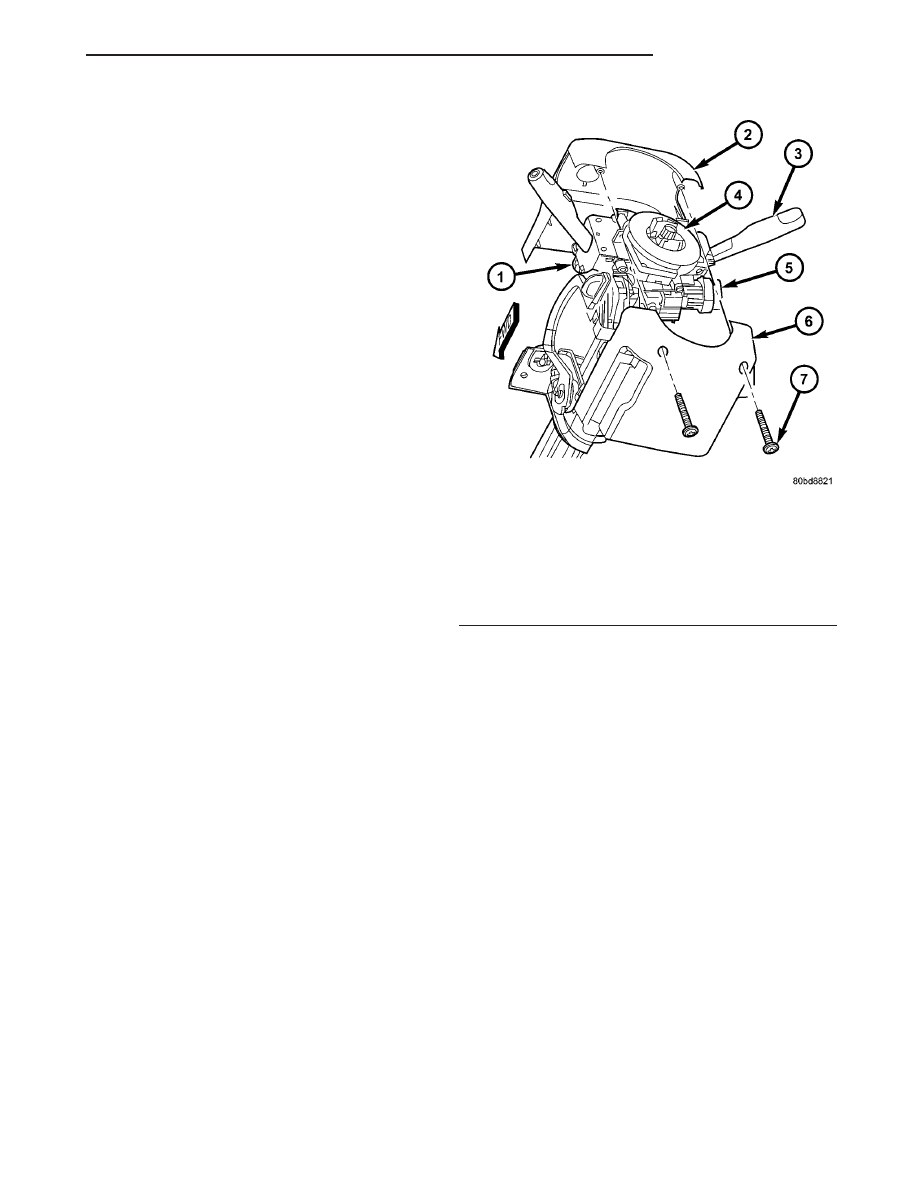Jeep Wrangler TJ. Manual - part 323

WARNING:
TO
AVOID
PERSONAL
INJURY
OR
DEATH, ON VEHICLES EQUIPPED WITH AIRBAGS,
DISABLE THE SUPPLEMENTAL RESTRAINT SYS-
TEM
BEFORE
ATTEMPTING
ANY
STEERING
WHEEL, STEERING COLUMN, AIRBAG, OR INSTRU-
MENT PANEL COMPONENT DIAGNOSIS OR SER-
VICE. DISCONNECT AND ISOLATE THE BATTERY
NEGATIVE (GROUND) CABLE, THEN WAIT TWO
MINUTES FOR THE SYSTEM CAPACITOR TO DIS-
CHARGE BEFORE PERFORMING FURTHER DIAG-
NOSIS OR SERVICE. THIS IS THE ONLY SURE WAY
TO DISABLE THE SUPPLEMENTAL RESTRAINT
SYSTEM. FAILURE TO TAKE THE PROPER PRE-
CAUTIONS COULD RESULT IN ACCIDENTAL AIR-
BAG DEPLOYMENT.
NOTE: Before starting this procedure, be certain to
turn the steering wheel until the front wheels are in
the straight-ahead position.
(1) Place the front wheels in the straight ahead
position.
(2) Remove the driver airbag from the steering
wheel. (Refer to 8 - ELECTRICAL/RESTRAINTS/
DRIVER AIRBAG - REMOVAL).
(3) Disconnect the two upper clockspring pigtail
wire connectors from the two speed control switches
or the two trim bezels located within the two spoke
cavities of the steering wheel.
CAUTION: Be certain that the screws that secure
the steering wheel puller to the steering wheel are
fully engaged in the steering wheel armature with-
out passing through the steering wheel and damag-
ing the clockspring.
(4) Remove the steering wheel from the steering
column. (Refer to 19 - STEERING/COLUMN/STEER-
ING WHEEL - REMOVAL).
(5) Remove the steering column opening cover
from the instrument panel. (Refer to 23 - BODY/IN-
STRUMENT PANEL/STEERING COLUMN OPEN-
ING COVER - REMOVAL).
(6) From below the steering column, remove the
two screws that secure the lower steering column
shroud to the upper shroud (Fig. 18).
(7) If the vehicle is equipped with the optional tilt
steering column, move the tilt steering column to the
fully lowered position and leave the tilt release lever
in the released (down) position.
(8) Using hand pressure, push gently inward on
both sides of the upper shroud near the parting line
between the upper and lower shrouds to release the
snap features that secure it to the lower shroud.
(9) Remove both the upper and lower shrouds from
the steering column.
(10) Disconnect the two body wire harness connec-
tors for the clockspring from the two connector recep-
tacles below the steering column on the back of the
clockspring housing (Fig. 19).
(11) Using a small screwdriver, gently pry both
plastic latches that secure the clockspring away from
the steering column upper housing far enough to pull
the clockspring away from the upper housing.
NOTE: If the clockspring plastic latches are broken,
be certain to remove the broken pieces from the
steering column upper housing.
(12) Remove the clockspring from the steering col-
umn upper housing. The clockspring cannot be
repaired. It must be replaced if faulty or damaged, or
if the driver airbag has been deployed.
(13) If the removed clockspring is to be reused, be
certain to secure the clockspring rotor to the clock-
spring case to maintain clockspring centering until it
is reinstalled on the steering column. If clockspring
centering is not maintained, the clockspring must be
centered again before it is reinstalled. (Refer to 8 -
ELECTRICAL/RESTRAINTS/CLOCKSPRING
-
STANDARD PROCEDURE - CLOCKSPRING CEN-
TERING).
Fig. 18 Steering Column Shrouds Remove/Install
1 - LEFT MULTI-FUNCTION SWITCH
2 - UPPER SHROUD
3 - RIGHT MULTI-FUNCTION SWITCH
4 - CLOCKSPRING
5 - IGNITION LOCK CYLINDER HOUSING
6 - LOWER SHROUD
7 - SCREW (2)
TJ
RESTRAINTS
8O - 17
CLOCKSPRING (Continued)